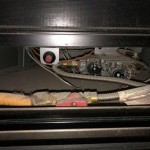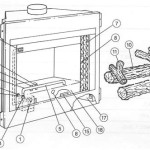Fireplace Stove Pipe: A Guide to Safe and Efficient Installation
A fireplace stove pipe, also known as a chimney, is a vital component of any wood-burning stove or fireplace. It serves as the conduit for smoke and gases to safely exit your home and into the atmosphere. The proper installation and maintenance of stove pipe are crucial for ensuring the safety and efficiency of your heating system. This article will provide a comprehensive guide to understanding the different types of stove pipe, their installation process, and essential safety considerations.
Choosing the Right Stove Pipe
The first step in installing a stove pipe is choosing the appropriate type and size. Several factors influence this decision:
- Stove Type: Different stoves require specific pipe diameters and materials. Refer to your stove manufacturer's instructions for the recommended pipe size and type.
- Fuel Type: The type of fuel you burn—wood, pellets, or gas—will dictate the material and thickness of the stove pipe. For example, wood-burning stoves often require thick-walled steel pipe, while gas stoves may use lighter-gauge stainless steel.
- Chimney Height: The height of your chimney also plays a role in determining the required pipe size and length. Proper chimney height ensures efficient draft and safe smoke expulsion.
Common stove pipe materials include:
- Stainless Steel: Highly durable and resistant to corrosion, making it a popular choice for both indoor and outdoor applications.
- Black Steel: Less expensive than stainless steel but may require regular maintenance to prevent rust.
- Double-Wall Pipe: Offers superior insulation and heat resistance, minimizing heat loss and potential fire hazards.
Installing Stove Pipe Safely
Once you've selected the appropriate stove pipe, proper installation is essential for safety and performance. Here are key steps involved:
- Obtain Permits: In many areas, building codes require permits for the installation of chimneys and stove pipes. Consult your local building department for regulations.
- Choose the Correct Location: The stove pipe should be installed in a straight, vertical path from the stove to the chimney. Avoid sharp bends or angles, which can hinder airflow and increase the risk of creosote buildup.
- Securely Attach the Pipe: Each section of pipe should be securely connected with clamps or other approved fastening methods. Use heat-resistant sealant to ensure airtight connections.
- Install Fire Stops: Fire stops are essential for preventing fire spread. They are typically made of non-combustible materials like drywall or steel and are installed at the point where the stove pipe passes through the wall or ceiling.
- Inspect and Clean Regularly: Regularly inspect the stove pipe for signs of damage, corrosion, or creosote buildup. Creosote can be highly flammable and should be removed professionally for safety.
Essential Safety Considerations
Proper stove pipe installation and maintenance are crucial for preventing fire hazards. Here are some key safety considerations:
- Clearance Distances: Maintain proper clearances between the stove pipe and combustible materials like walls, ceilings, and furniture. These clearances are typically specified by the stove manufacturer and building codes.
- Proper Ventilation: Adequate ventilation is necessary to prevent the buildup of smoke and combustion gases. Ensure your home has adequate airflow and that any vents or windows are not obstructed.
- Smoke Detector Installation: Install working smoke detectors in your home, especially near the fireplace or stove area.
Remember, it is highly recommended to consult with a qualified professional chimney sweep or stove installer for guidance and assistance with the installation and maintenance of your stove pipe. They can ensure that the system is installed correctly, meets safety standards, and operates efficiently.

Chimney Installation Cookstove Community

Wood Stove Installations Chapel Hill Nc Burlington Fire Safe

Through The Wall Kit For 6 Inner Diameter Chimney Pipe With Flat Top Cap

Proper Stove Pipe Installation Ehow

Chimney Installation Parts

Flue Pipe Chimney Greenstone Soapstone Masonry Heaters

5 Inch Double Wall Stove Pipe Insulated Chimney

Flue Pipe Chimney Greenstone Soapstone Masonry Heaters

Chimney Stove Pipe Tristan S Service

Double Wall Black Stove Pipe Wood
Related Posts








